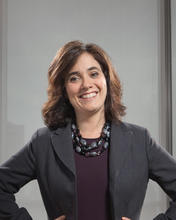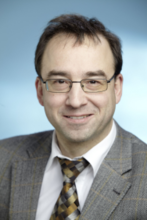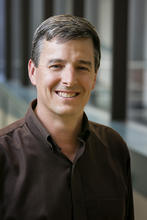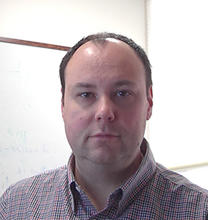OMN 2017 Keynote Speakers
Prof. Michal Lipson

Columbia University
Bio: Professor Michal Lipson joined the Electrical Engineering faculty at Columbia University in July 2015. She completed her B.S., M.S., and Ph.D. degrees in Physics at the Technion in 1998 followed by a Postdoctoral position at MIT in the Materials Science Department till 2001. In 2001 she joined the School of Electrical and Computer Engineering at Cornell University. She was named Cornell Given Foundation Professor of Engineering in 2013. Lipson was one of the main pioneers in the field of silicon photonics and is the inventor of several of the critical building blocks in the field including the GHz silicon modulator. She holds over 20 patents and is the author of over 200 technical papers. Prof. Lipson held several leadership positions in the scientific community including, IEEE Photonics society board of directors member, co-organized numerous symposia and sessions in OSA conferences. She chaired and served on numerous committees including the Micro and Nanophotonics Subcommittee of CLEO, which she chaired 2006-2009. She has served as a topical editor (integrated photonics) for Optics Letters and served as a guest editor for IEEE Journal of Selected Topics of Electronics. She is currently serving on the board of directors for two international photonics centers, two startup companies and on the Rice ECE Advancement Committee. She is a co-founder of PicoLuz, a company specializing in nonlinear silicon photonic components. Professor Lipson's honors and awards include the MacArthur Fellow, Blavatnik Award, IBM Faculty Award, and the NSF Early Career Award. She is a fellow of OSA and IEEE. In 2014, and in 2015 she was named by Thomson Reuters as a top 1% highly cited researcher in the field of Physics. More information on Professor Lipson can be found at http://lipson.ee.columbia.edu/
Talk title: Graphene for next generation silicon photonics
Talk abstract: We show that graphene can be provide electro-optic properties to traditionally passive optical materials and enable efficient integrated active nanophotonic devices. We show devices with GHz absorption modulation based on ring resonators. We also report the first experimental demonstration of a graphene electro-refractive modulator with VπL of 0.14 Vcm, and minimal absorption modulation based on graphene capacitor integrated on Si3N4 with embedded high-K and high breakdown dielectric.
Prof. Juerg Leuthold

Bio: Juerg Leuthold was born in 1966 in Switzerland. He has a Ph.D. degree in physics from ETH Zürich for work in the field of integrated optics and all-optical communications. From 1999 to 2004 he has been affiliated with Bell Labs, Lucent Technologies in Holmdel, USA, where he has been performing device and system research with III/V semiconductor and silicon optical bench materials for applications in high-speed telecommunications. From 2004--2013 he was a full Professor at Karlsruhe Institute of Technology (KIT), where he headed the Institute of Photonics and Quantum Electronics (IPQ) and the Helmholtz Institute of Microtechnology (IMT). Since March 2013 he is a full Professor at Swiss Federal Institute of Technology (ETH).
Juerg Leuthold is a fellow of the Optical Society of America, a fellow of the IEEE. When being a Professor at the KIT he was a member of the the Helmholtz Association Think Tank and a member of the Heidelberg Academy of Science. He currently serves as as a board of director in the Optical Society of America OSA). Juerg Leuthold has been and is serving the community as general chair or member of technical program committees in many conferences.
Talk title: Plasmonics – a Path to Replace Photonics by a Scalable, Ultrafast Technology?
Talk abstract: Plasmonics is increasingly touted as a solution to replace traditional photonics. And indeed, a new generation of passive and active plasmonic elements is emerging. Unlike photonic devices these plasmonic elements feature a tiny footprint in combination with an almost unlimited bandwidth. Yet, plasmonic devices also suffer from high losses. The question then is where and when plasmonics really can make a difference. In this talk, we will review and comment the latest generation of plasmonic devices encompassing plasmonic electro-optical modulators, detectors, RF-receivers, couplers and waveguides and compare them against devices relying on the traditional silicon technology.
Prof. John A. Rogers

Louis Simpson and Kimberly Querrey Professor of Materials Science and Engineering, Biomedical Engineering and Medicine
Northwestern University
Bio: Professor John A. Rogers obtained BA and BS degrees in chemistry and in physics from the University of Texas, Austin, in 1989. From MIT, he received SM degrees in physics and in chemistry in 1992 and the PhD degree in physical chemistry in 1995. From 1995 to 1997, Rogers was a Junior Fellow in the Harvard University Society of Fellows. He joined Bell Laboratories as a Member of Technical Staff in the Condensed Matter Physics Research Department in 1997, and served as Director of this department from the end of 2000 to 2002. He then spent thirteen years on the faculty at University of Illinois, most recently as the Swanlund Chair Professor and Director of the Seitz Materials Research Laboratory. In 2016, he joined Northwestern University as the Louis Simpson and Kimberly Querrey Professor of Materials Science and Engineering, Biomedical Engineering and Medicine, with affiliate appointments in Mechanical Engineering, Electrical and Computer Engineering and Chemistry. He is founding Director of the newly endowed Center for Bio-Integrated Electronics. His research has been recognized by many awards including a MacArthur Fellowship (2009), the Lemelson-MIT Prize (2011), the Smithsonian Award for American Ingenuity in the Physical Sciences (2013) and the IEEE EMBS Trailblazer Award (2016). He is a member of the National Academy of Engineering, the National Academy of Sciences, the National Academy of Inventors and the American Academy of Arts and Sciences.
Talk Title: Microscale Light Emitting Diodes: From Information Display to Discovery Tools in Neuroscience
Abstract: Recent advances in materials science and engineering provide means for constructing high-performance light emitting diodes with unusual sizes, shapes and forms and with efficient operation throughout the infrared, visible and ultraviolet. When combined with high-speed assembly techniques, microscale devices of this type can be configured onto ultrathin polymer filaments for injection into biological tissues, onto elastomeric substrates for use in skin-conformal health diagnostics, and into large-scale sparse arrays for high-speed displays with unmatched brightness, contrast, switching speeds and power efficiency. This talk summarizes the foundational scientific concepts and the engineering designs for these and other applications.
Prof. Oskar Painter

Caltech
Bio: Oskar Painter received his Bachelor of Applied Science degree in Electrical Engineering from the University of British Columbia in 1994, his Master of Science degree from the California Institute of Technology in 1995, and his Ph.D. in Electrical Engineering from the California Institute of Technology in 2001. He joined the faculty at the California Institute of Technology in 2002, where he is now the John G. Braun Professor of Applied Physics and the co-Director of the Kavli Nanoscience Institute. Prof. Painter's current research interests are in studying the quantum properties of mechanical systems, superconducting quantum circuits, and light matter-interactions of ultra-cold atoms trapped in nanoscale photonic crystals. He has received several awards and recognitions including most recently an Alexander von Humboldt Professorship – an International Award for Research in Germany.
Talk title: Integrated optomechanical and superconducting quantum circuits
Talk abstract: I will present recent work at Caltech on the integration of optomechanical crystals for light and sound with electronic superconducting quantum circuits. Utilizing the silicon-on-insulator (SOI) wafer platform, we have made key advances in the fabrication and integration of extremely low loss microwave phonon structures and low loss microwave superconducting resonators of high impedance. These technical advancements offer several intriguing opportunities for quantum information processing and networking with phonons, photons, and electrons in an integrated, wafer-scale platform. The focus of my talk will be on two examples of our efforts in this direction: (i) nonreciprocal photon transport and amplification arising from synthetic magnetic flux and reservoir engineering in an optomechanical crystal circuit, and (ii) waveguide-QED systems consisting of microwave-bandgap circuits with embedded transmon-like qubits.

